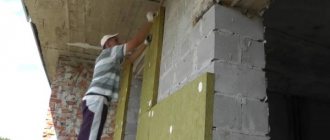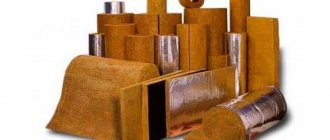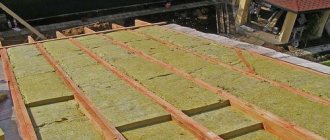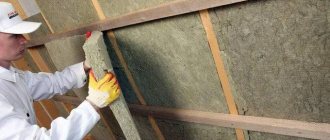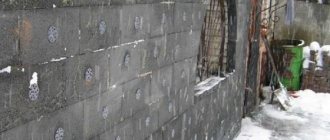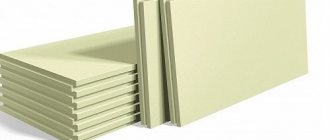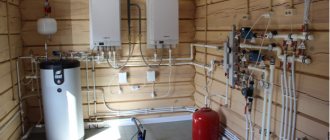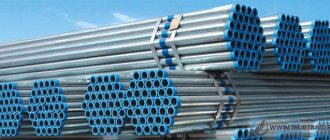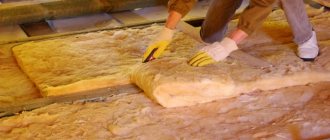Bulk basalt crumb 400 rub/cub.m
Bulk (blown, stuffed) wool is a relatively new, convenient and economical mineral wool thermal insulation material obtained by dispersing (crushing) mineral wool slabs and mineral wool waste in a special machine. Supplied to the consumer in bags, in loose and bulk form, it is an excellent additional insulation for existing thermal insulation - for example, for slag, sawdust, expanded clay, etc.
| Application area. Insulation of building structures: attics, ceilings, floors. Bulk basalt wool: density 35-50 kg/cub.m. Usage volumes in European countries are doubling every year. |
Insulation methods.
1. Automated - characterized by a method of laying a heat-insulating layer, in which specialized compressor-screw equipment is used to supply insulation to building structures. 2. Mechanical - characterized by manual laying of material.
Insulation technology. Insulation of attics, ceiling space and floors
: when insulating the attic space, the entire horizontal surface of the attic is covered with an even layer of cotton wool, which also envelops the ventilation pipes, filling the slightest gaps.
If additional thermal insulation , blow-in wool
in a layer of 15-25 cm. Regarding brickwork, a 20 cm layer of blow-in wool is equal to 2.5 bricks.
Insulation of building structures using Blown-in Wool is an effective way to insulate attics, ceilings, roofings, floors and walls.
Characteristics of blown-in (bulk) wool. — is a non-flammable material (flammability group NG); — long period of decomposition (50 years); — chemical resistance; — thermal conductivity (0.042 W/(mK)); — water absorption (no more than 2%); — density 25-35 kg/cub.m (can be easily compacted mechanically to 60 kg/cub.m; further compaction will lead to an increase in the thermal conductivity coefficient).
— Thermal insulation properties: basalt crumb consists of the finest fibers, chaotically connected to each other and forming cells filled with air. — Fire properties : unlike ecowool
, basalt wool materials effectively prevent the spread of flames and can be used as fire insulation and fire protection.
— Hydrophobic properties : in the production of stone wool products, special additives are used to enhance their water-repellent properties. — High vapor permeability
: if in some case water penetrates the fiber, then after the cessation of such exposure, the moisture will evaporate from it.
Well-permeable to water vapor, stone wool almost always remains dry, maintaining the internal temperature regime of the room. — Safety and environmental friendliness : basalt crumbs are safe for the environment and human health.
It is non-toxic, non-biodegradable and odorless. Bulk wool
is a “breathable material” that will protect against the appearance of fungi and mold in those places where the thermal insulation comes into contact with the building structures.
Advantages of application. - has elasticity and lightness; — has low shrinkage and does not accumulate moisture; —
ease of installation in hard-to-reach places, allows you to fill all voids and cracks in building structures; — allows you to create an even, dense continuous layer of thermal insulation, guarantees the absence of “cold bridges” and guarantees a reduction in energy costs for heating — the possibility of reuse; — installation efficiency equal to 35 sq.m/hour. Two highly qualified installers carry out the entire technological process, with a productivity of about 800 sq.m., in one shift.
Application practice in Russia.
World practice of using blown wool
is relatively new for Russia, which cannot be said about Europe, where this insulation has taken its rightful place in the market of thermal insulation materials.
Currently, in our country there is a steady trend of growth in the construction industry’s demand for blow-in wool. The market is intensifying, and more and more customers are interested in using automated installation technology for bulk wool
.
Basalt insulation, blown wool
Is it cold in your house? Or do you have gaps through which a draft passes? Or do you just dream of a warm home? Then come to us!
We insulate: private houses, cottages, bathhouses, residential private cottages, apartment buildings, hangars, warehouses, office premises, shops, walls, attics, floors, house facades.
Blown-in wool is insulation in the form of individual fibers or flakes, which is laid by “blowing” through a hose onto the surface to be insulated. In this regard, no joints are formed, there are no cold bridges and the thermal insulation of the premises is significantly improved.
Blown-in cotton wool is a non-flammable, natural, environmentally friendly and safe material for heat and sound insulation of any structures.
This type of insulation can be used where it is inconvenient to lay classic thermal insulation boards.
When installing them, technological joints are necessarily formed, through which heat escapes. No matter how tightly the installers fit one sheet of heat-insulating material to another, gaps cannot be avoided. And these gaps conduct the cold very well.
Comparing all the thermal insulation materials on the market, we can confidently say that Blown-in Wool is the best of them.
When using Blown-in Wool, a single thermal insulation coating is formed without joints or abutments, which covers the entire area of the insulated structure, fills all existing voids and cracks, envelops the pipes, because the hose through which the cotton wool is supplied can be directed to the most inaccessible areas of the roof.
Advantages of Blown-in Wool:
1. It is universal, so it is ideal for insulating walls, floors, roofs and attics
2. The use of modern equipment makes it possible to apply blow-in cotton wool to the most inaccessible places
3. “Blow-in wool” insulation is not subject to rotting
4. Absolutely environmentally friendly
5. Prevents the spread of fire (flammability class - NG)
6. Minimum heating costs (Saving on heating from 30% to 40%)
7. Creates a microclimate of the internal environment
8. Repels rodents, blocks the formation and growth of mold
9. Seamless insulation (absence of “cold bridges”, seam voids, cracks and joints)
10. Cool in summer and warm in winter
11. No sweating of walls
12. Excellent sound insulation
Blown-in wool is installed using special screw-compressor equipment.
You can learn more about the properties of blow-in wool, the methods of its installation, and calculate the approximate cost of work on thermal insulation of your facility by contacting us at the specified number!
“Blown-in cotton wool”: from recycling substandard materials to high-quality thermal insulation
From the editor. The technology, which has become widespread in our country under the code name “blown wool”, is a cost-effective and environmentally friendly solution to one of the important production problems associated with the disposal of substandard basalt and fiberglass insulation.
World practice of application
Over the past few years, a whole industry of environmentally friendly thermal insulation materials has emerged in the world. We are talking about a relatively new technology for Russia - “blown cotton wool”. New specifically for Russia, since this product has already proven itself in the world and has taken its rightful place in the construction market. Insulating building structures using automated installation of “blown-in wool” is an effective way to insulate attics, ceilings, roofings, floors and walls.
Every year “blown cotton wool” is gaining more and more popularity in the Scandinavian and Baltic countries, Canada and the USA, and now in Russia. The use of this type of thermal insulation began in Europe in the mid-1980s. At that time, this material was practically unknown to builders, but the situation soon changed. To date, the volume of installation of “blown wool” shows significant growth every year, as the interest and awareness of customers is constantly increasing.
For example, in the Scandinavian and Baltic countries in 2007, the volume of use of “blown wool” increased by 25% compared to the previous year. In Estonia in 2007, about 150,000 m 3 of this thermal insulation was installed. At the same time, forecasts for the current year are optimistic. Most widely in Scandinavian countries, “blown insulation wool” is used in the construction of cold ventilated attics. In addition, it is used to insulate walls, floors and, of course, in all structures where it is impossible to use thermal insulation boards.
All over the world, three types of materials are used using blowing technology: – basalt wool; – glass wool; – cellulose wool. The first two types of blown-in material are made from oversized thermal insulation boards and are non-flammable materials. Cellulose wool is made from pulp industry waste and waste paper. To avoid rotting and reduce the risk of fire of this material, cellulose is treated with a special solution of fire retardant and antiseptic.
A practical solution to the problem of recycling oversized thermal insulation materials
The appearance of “blown wool” is not accidental; it entails the opening of an entire industry of production, starting from the stage of processing oversized thermal insulation materials, which removes the issue of recycling waste from the manufacturer, and ending with the development of the construction industry, where an automated method is used for the installation of this type of insulation.
What benefits does blown wool technology bring to the manufacturer? All enterprises today face the important task of preserving the environment. Legislation and a set of regulations prohibit the disposal of production products that harm the environment. It is almost impossible to recycle mineral thermal insulation, since these products are non-flammable materials and belong to the NG group. Depending on the raw material (glass or basalt), the melting point of materials in this group ranges from 850 to 1500 0 C.
The decomposition period of mineral insulation is approximately 150 years. The manufacturer, by processing oversized thermal insulation material, gets rid of “substandard” material without harming the environment, adding another high-quality type of thermal insulation to its own range of thermal insulation brands. The material is packaged in modern packaging, which makes it possible to economically transport the thermal insulation material to the site.
A similar technology has been developed for the production of sandwich panels, where even with correct calculations, a percentage of defects occurs. One of the main advantages of blow-in technology is the installation of thermal insulation without joints or junctions - the main reason for the occurrence of “cold bridges”. Thanks to the automated installation method, it is possible to insulate hard-to-reach places that cannot be done efficiently using slab or roll materials.
As a result, the quality of work increases, which also leads to the absence of heat losses during the operation of the building. Otherwise, “blown wool” does not differ in properties, composition and quality from traditional mineral wool thermal insulation materials. Considering the nature of the production of blown-in thermal insulation material, in addition to decent quality, it is necessary to note the moderate cost and availability of this type of thermal insulation.
Production and installation technology
Equipment for the production of blown-in thermal insulation is quite compact, mobile and has high productivity (250–400 m 3 of high-quality thermal insulation can be produced in an 8-hour shift). As a rule, three people work in production, but it is possible to completely automate the process. It is not necessary to build additional space to start producing blown mineral wool. The equipment can be moved from one facility to another, as it is easily dismantled and fits into one large cargo truck.
As we have already mentioned, it is possible to recycle sandwich panels, which until now were simply impossible to recycle. This development exists in Finland and has no analogues. Installation equipment designed for loosening blown-in wool and applying it as a thermal insulation layer to building structures allows for rapid installation. With the advent of automated installation of “blown wool”, the human factor ceased to influence the quality of the work performed.
The number of installation workers was reduced to two, and productivity increased manifold. Two qualified specialists are able to insulate up to 800 m2 in one work shift. At the same time, work costs were reduced. The productivity of professional installation equipment, depending on the selected material, is 55–65 m 3 /h. An experienced installer is able to install no more than 35–40 m 3 / h.
Then why do we need such high performance? To ensure long equipment life, it is necessary to have additional production capacity. The productivity of professional equipment must be higher than the efficiency of the installer, otherwise its wear and tear will lead to serious breakdowns and, as a result, loss of time and additional unforeseen expenses. In addition to a long service life, the installation equipment must be reliable at low temperatures, easy to maintain, and have independent power supply.
Considering the power of such brands of installation equipment as Multi Master 4565 or Rock Master 4556, one more advantage can be added - the ability to install “blown wool”, in the absence of access roads, at a distance of up to 200 m from the site, and in high-rise construction - up to 100 m in height, without losing performance. The above models produce insulation based on basalt wool with a volume of 65 m 3 /h, fiberglass - 50 m 3 / h, cellulose - 80 m 3 / h.
Blowing basalt wool, Perm
Product description
Blown-in insulation (Blown-in wool) is a modern, environmentally friendly, safe for health, ensuring the absence of heat loss and sound absorption.
Blown-in cotton wool has recently been increasingly used to insulate walls, ceilings, floors and attics .
This type of insulation is low cost and does not burn, as it consists of mineral wool fibers. Blown-in wool is distinguished by low thermal conductivity, since when laid, mineral wool forms a continuous layer of insulation of uniform density without joints or abutments.
Unlike traditional sheet insulation, blown-in wool is literally blown in using special compressor-screw equipment directly into the desired location of the building structure. In this case, the insulation layer is formed directly on site as a single whole. Blown-in cotton wool tightly fills all voids and crevices, even in the most inaccessible places.
Blown-in wool envelops all pipes, beams, rafters and other irregularities on the surface of the building structure.
Blown-in wool can be used with equal success in buildings under construction and for restoring thermal insulation in old buildings, where it is blown over old thermal insulation material.
Blown-in wool is also of interest from a technological point of view, since insulation with its help is carried out very quickly. The productivity of the blown wool layerer is up to 400 m² per shift.
Since the equipment for forming a layer of blow-in wool is installed on the frame of a truck, the installation of thermal insulation from this insulation can be carried out directly from the wheels, from a distance of up to 200 m from the place where the layer of blow-in wool is formed horizontally and at a height of up to 100 m.
Advantages of ecowool along with other insulation materials
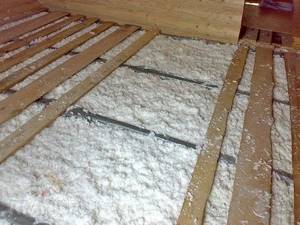
This indicates its moisture resistance, which is a huge plus when purchasing. Most people are afraid of rodents entering their home, and ecowool prevents them from getting in, and also stops the fungus that has already begun to develop.
Also, unlike insulation based on basalt rocks, which flares up and produces toxic combustion products, ecowool is a highly flammable product.
And even if it catches fire, it will extinguish itself without leaving any toxic waste.
Many people want the insulated walls of their houses to “breathe”. Compared to mineral wool, polystyrene foam and polyurethane foam, which contribute to the formation of condensation, ecowool wins in this regard.
When laying insulation materials, such as expanded polystyrene boards, and insulation based on basalt rocks, seams are formed that allow cold to pass through and lead to heat loss in total of at least 25% of the desired result.
Please note that ecowool is a seamless material.
As for sound insulation, ecowool 5 centimeters thick is 5-8 times more sound absorbent than polystyrene foam, which is 41 dB. Every owner, when building a house or making renovations, dreams of a good price-quality ratio. In this regard, ecowool is a good choice, considering factors such as service life and lack of waste. Many professionals have been insulating buildings using this high-quality material for many years.
Blown basalt insulation
tel. +7>
- home
- About company
Blown-in (bulk) wool
- Description
- Characteristics
- Prices
- Application
- Properties
- Recommendations
- Video
Non-flammable bulk (blown) wool CUTWOOL ® is a ready-to-use thermal insulation material based on basalt wool, manufactured in the form of individual hydrophobized flakes (fibers).
CUTWOOL ® bulk wool is a non-flammable material (NG), which is confirmed by a fire safety certificate. Has slight shrinkage and does not accumulate moisture.
Bulk wool is supplied in single packaging, with a minimum volume of 0.12 m3.
In all other respects, bulk wool does not differ in its properties, composition and quality from traditional thermal insulation materials based on basalt wool.
CUTWOOL ® bulk wool is made from mineral basalt wool with a synthetic binder in accordance with TU 5762-002-89646568-2013.
— is a non-flammable material (flammability group NG);
— long period of decomposition (50 years);
— thermal conductivity (0.036 W/(mK));
— water absorption (no more than 2%);
— density 90-100 kg/cub.m.
The CUTWOOL ® company reserves the right to change the range of products manufactured at any time, and the technical characteristics of the products may also change.
NON-FLAMMABLE BULK (BLOWED) WOOLCUTWOOL ® BW
The product's name
Packaging, pcs.
Packaging, m 3
Price including VAT, rub.
m 3
package
NON-FLAMMABLE BULK (BLOWN) WATER CUTWOOL ® BW
850,00
102,00
Non-flammable bulk (blown) wool CUTWOOL ® is used for thermal insulation of non-load-bearing, hard-to-reach structural elements. This material is ideal for insulating complex structures such as an attic, roof or attic, which usually have a lot of interference in the form of rafters or various communications. Unlike conventional insulation, CUTWOOL ® non-flammable bulk wool is easily installed in places where there is not enough free space for work, lack of lighting, etc.
Thermal conductivity.
CUTWOOL ® mineral wool products are a highly effective thermal insulation material. High heat transfer resistance is achieved by keeping a large amount of air stationary inside the insulation using closely intertwined thin and flexible mineral wool fibers. Due to low thermal conductivity and high resistance to heat transfer, CUTWOOL ® mineral wool products allow you to effectively save heat and maintain the desired temperature.
Hydrophobicity.
CUTWOOL ® mineral wool thermal insulation products are resistant to water as they are made of stone. All thermal insulation elements are treated with water-repellent additives, giving the insulation water-repellent properties.
Durability.
CUTWOOL ® products are made from rocks of the basalt group and have good resistance to external influences. The products retain their performance properties for 50 years, which is due to both the characteristics of an individual fiber and the work of the entire construct, a frame made of randomly directed and intertwined fibers (96-99%) and the binder holding them together (1-4%). The use of special additives (water repellents, adhesion promoters) significantly increases the durability and efficiency of CUTWOOL ® thermal insulation products.
Blown wood fiber insulation
The content of the article:
- Description and production
- Specifications
- Advantages
- Flaws
- Criterias of choice
- Price and manufacturers
- Installation instructions
Blown-in wood fiber insulation is an insulation material that is a blend of virgin wood fibers. When blown out (fall asleep) using special equipment, the heat insulator fills the entire space of the insulated structure.
Thermal insulation of buildings
Finnish technology for thermal insulation of buildings. Blown insulation
Thermal insulation of buildings and structures is one of the most important elements in modern construction. Construction technologies are constantly updated, new modern materials appear, but one thing remains unchanged: people strive for comfort. In Russia, unlike, say, Europe, the attitude towards thermal insulation of buildings is very ambiguous. On the one hand, everyone understands that it is necessary to insulate, but on the other hand, they are not sufficiently aware of the importance of thermal insulation. But due to constantly rising energy prices and utility bills, more and more respected people are beginning to think about the costs of maintaining their homes. This issue becomes even more relevant on a national scale.
There are several technologies for insulation and thermal insulation of buildings:
- The technology of slab insulation is well known to everyone. The molded material in the form of plates is laid out one above the other, while in hard-to-reach places it is problematic to create good thermal insulation and so-called cold bridges are formed.
- Rolled material is also known to consumers, but is used less and less due to the obsolescence and inefficiency of the technology.
- There is also an old method of insulation with sawdust, sand, wood chips, but these technologies are too troublesome, time-consuming to install and ineffective.
- The most advanced, modern technology for thermal insulation of buildings is the method of supplying insulation fibers to a prepared surface or into niches (cavities) using compressed air. The technology is called “Blown-in wool” or blown-in insulation.
Blown-in insulation is an effective method of thermal insulation of buildings
The essence of blown-in insulation technology is that the insulation fibers are not molded into slabs, but are packaged in compressed form, which makes it possible to significantly reduce the volume of material during transportation (by 5-10 times, depending on the material).
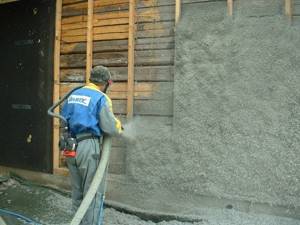
For installation, a special technique is used that loosens the compressed material, thereby filling it with air and, under pressure, through a hose, transfers the material to the object, where the operator distributes the cotton wool evenly over the entire surface, including hard-to-reach places, crevices, and corners. This achieves the effect of seamless insulation, no cold bridges are formed, which prevents heat loss during the cold season and the penetration of heat on hot days, and as a result, you save on both heating and air conditioning of the room!
It is also worth noting the speed of installation using this technology. Unlike slab material, when a person is able to insulate no more than 0.5-1.0 cubic meter of material per hour, using blow-in technology the operator insulates at least 40 cubic meters per hour, which also saves your money.

In Finland, 100 roofs and 95% of partitions and floors on the first floor are insulated using blow-in technology. This technology is also used in insulating multi-storey buildings, warehouses, hangars, dachas, and houses. In Russia, this technology is still very little known to consumers, but the advantages are so obvious that more and more people are choosing a more effective, economically feasible and environmentally friendly method of insulation.
- ECO-WOOL cellulose blown wadding
- ISOVER glass blown wool
- PAROC basalt blown wool
- ROCKWOOL basalt blown wool
- SOFTWOOL basalt blown wool
- STEICO (Steiko, Steiko) windproof plate
Cost of work on insulation and thermal insulation of buildings
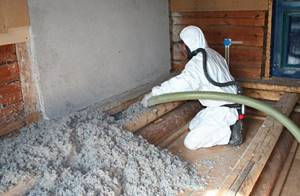
Basalt wool:
- Horizontal blowing - from 2500 rub/m3
- Inclined blowing - from 2700 rub/m3
Glass wool:
- Horizontal blowing - from 1800 rub/m3
- Inclined blowing - from 2000 rub/m3
- Vertical blowing - from 2300 rub/m3
Basalt fiber insulation: production
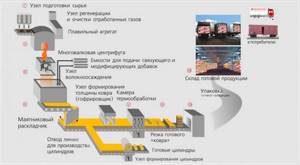
To understand what basalt wool insulation is, it is better to understand the process of its production. Thus, slabs, rolls, and blown-in wool (namely, stone insulation material is produced in these formats) are based on rock waste. The insulation production process looks like this:
- Finely crushed rock waste is brought to melting at very high temperatures. At this point, the small stone fragments take the form of “caramel” fibers, reminiscent of cotton candy.
- The next step is mixing stone fiber with binding components. Most often, formaldehyde resins play their role. At this stage, the fibers are arranged randomly, forming a fairly strong structure. At the same time, the density of basalt wool depends on the purpose of the material and can vary. We will talk about this in more detail in the “technical characteristics of the material” section.
- Then the resulting building mass is pressed into slabs or flexible rolls when exposed to a temperature of +300 degrees Celsius. The insulation is additionally hardened, which increases its strength.
- In addition, some types of stone insulation are equipped with foil on one side. This basalt wool with foil has the best thermal conductivity and thermal insulation properties.
- The finished material is packaged in accordance with the purpose and type of insulation.
Important: basalt wool can be flexible, semi-rigid or rigid in its structure (blown wool has only a pliable plastic form). The choice of material in this case depends on the object to be insulated. Thus, pipelines and highways are wrapped in rolled flexible material, semi-rigid wool is used to insulate residential buildings, and hard wool is suitable for industrial production.

